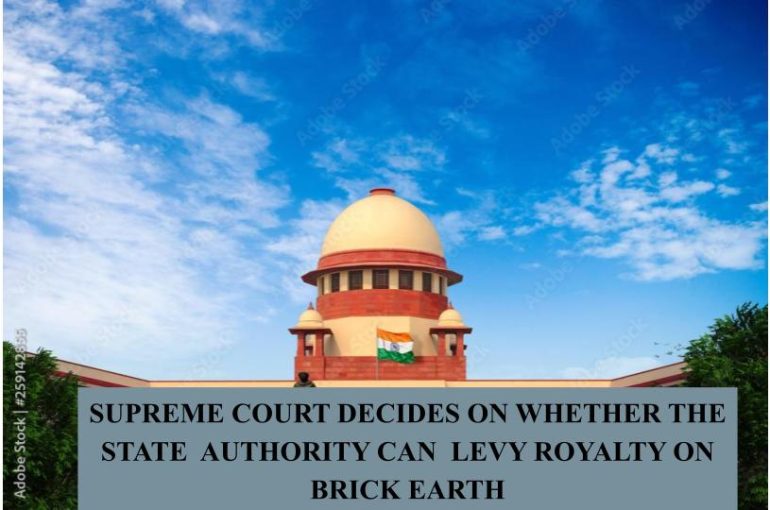SUPREME COURT DECIDES ON WHETHER THE STATE AUTHORITY CAN LEVY ROYALTY ON BRICK EARTH
The Judgment in the Case of State of Punjab & Ors. vs. M/s Om Prakash Brick Kiln Owner, Etc. (Civil Appeal Nos. 10687-10694 of 2013) was delivered by a Division Bench of the Supreme Court of India, comprising Hon’ble Justice Abhay S. Oka and Justice Ujjal Bhuyan, on January 21, 2025. The case revolves around whether the State can levy royalty on brick earth without properly proving ownership under relevant laws, despite its declaration as a minor mineral under the Mines and Mineral (Regulations and Development) Act, 1957. The Supreme Court emphasized that ownership must be explicitly established by the State to justify the levy.
Brief Facts of the Case
The Respondents (M/S Om Prakash Brick Kiln Owner, Etc.), who were brick kiln operators, leased land from private owners for extracting brick earth to manufacture bricks. They filed suits to prevent the State of Punjab from assessing and recovering royalty on the use of brick earth, asserting that the brick earth was not owned by the State. They contended that neither the Punjab Land Revenue Act, 1887, nor the Mines and Mineral (Regulations and Development) Act, 1957, granted the State the authority to levy royalty on brick earth.
Issues Raised
Whether the State Government can levy royalty on the excavation of brick earth, even if the Respondents did not own the land they were operating on.
Contentions from Both Parties
Respondents Arguments
The Respondents contended that the State had failed to prove ownership of the brick earth and the declaration of brick earth as a minor mineral under the 1957 Act did not grant the State the right to levy royalty. They also argued that under the Section 42(2) of the Punjab Land Revenue Act, which presumes ownership in favor of landowners unless stated otherwise.
Appellants Arguments
The Appellants contended that the State has ownership of brick earth as per Section 42(1) of the Land Revenue Act, which presumes ownership for Land records completed before November 18, 1871. They also argued that under Rule 54A of the Punjab Minor Mineral Concession Rules, quarrying operations require a license, which enables the collection of royalty.
Supreme Court
The Supreme Court examined Section 42 of the Punjab Land Revenue Act, which presumes the State’s ownership of brick earth in certain circumstances. The Court found that the issue of ownership was not conclusively established due to the absence of private landowners as parties in the suit. It noted procedural shortcomings in the State’s attempt to assert its ownership over the brick earth and emphasized that statutory procedures must be followed to prove ownership. Furthermore, the Court clarified that the mere declaration of brick earth as a minor mineral under the 1957 Act did not automatically grant the State the right to levy royalty. Ownership must be explicitly proven according to relevant laws.
The Supreme Court allowed the Appeal, quashing the High Court’s judgment and restoring the Trial Court’s dismissal of the suit. The Court emphasized that ownership must be clearly established to justify the levy of royalty by the State.
Conclusion
To conclude, this case establishes that the mere declaration of a material as a minor mineral under the Mines and Mineral (Regulations and Development) Act, 1957, does not automatically grant ownership or the right to levy royalty. Ownership must be explicitly established as per the applicable laws.
Baddam Parichaya Reddy
Associate
The Indian Lawyer & Allied Services
Please log on to our YouTube channel The Indian Lawyer Legal Tips and learn about different aspects of the law. Our latest video is on “Supreme Court Litigation” that may be viewed on the link below:
https://youtu.be/scMIgaQs_7E?si=tNdNQq_vE3uT-_Cg





































Leave a Reply